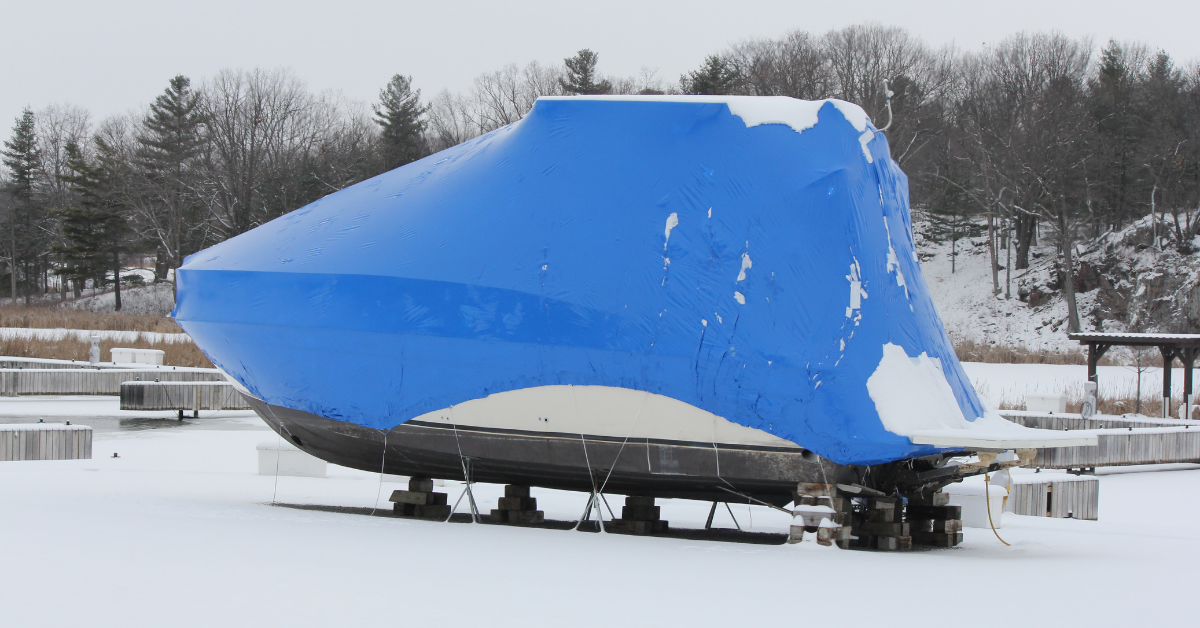
Batten down the hatches! The weather is cooling, and in many parts of the country, the sun is setting on chances to take your boat out on the water this year. With a diligent winterization plan, however, you can feel at ease knowing that your boat is riding out the colder months safe and secure, and will be ready when that first sign of warm weather arrives next year.
5 Ways to Winterize Your Boat
1. Clean, clean, clean!: A good dose of TLC will ensure that your boat stays in top shape. Check for any cracks, blistering or other damage, and give your boat a fresh coast of wax to protect it against the elements over the coming months. The bilge, deck and fish box are just some of the areas that Rejuvenate Marine recommends focusing on. And when you’re done, dry, dry, dry! Trapped moisture is dangerous, and can lead to corrosion and mold onboard your boat. Rejuvenate Marine suggests using microfiber towels or cloths to dry hard surfaces after cleaning, and making use of the sun to air and dry fabrics and carpets out.
2. Change the oil and fill up with fuel: By swapping out the old oil for new, you’ll prevent water and acid from corroding the engine. According to the American Boating Association (ABA), you should also fill your boat’s fuel tank to capacity (allowing just a little bit of room for expansion) and add a stabilizer. Failure to do so will allow air into the tank, which can condense on the sides as the temperature changes, causing corrosion and clogging over time. Turn off all fuel valves and use duct tape to seal off any through-hull exhaust ports. The ABA also recommends replacing your boat’s fuel filter and water separator.
3. Flush the cooling system: This allows for salt, dirt and debris to be removed from the cooling system, helping to prevent corrosion. If you’re expecting a colder winter, consider running antifreeze through the system. Winterizing the engine block with antifreeze can prevent any residual water from freezing and cracking your block as it expands, says West Marine. Some boatyards avoid this step by opening the petcock in the block and blowing compressed air through the entire raw water cooling system. However, West Marine points out the risk of winterizing that way, noting that any leftover water remaining in the block could cause a crack.
4. Consider your battery: Cold can be a killer for batteries. If storing your boat out of the water, the American Boating Association advises disconnecting your battery and storing it at home for easier maintenance and better protection against theft. Keeping your boat in the water over winter? Removing your battery is not recommended. Boats left in the water should have the battery onboard and functioning to ensure that the bilge pump will continue to function if needed. If you plan to take your battery off of the boat, ensure that it has a full charge before stowing it away. Maintain the charge over winter to avoid it freezing, and replenish the water level periodically.
5. Cover your boat: A quality boat cover is easy to take on and off, and protects your boat by keeping it safe and dry from the elements. According to the Boat Owners Association of the United States (BoatUS), the best covers are made from canvas. Among the benefits of a good, well-supported cover: keeping leaves and debris from clogging scuppers and causing the boat to flood in a downpour or snowmelt, and preventing snow from accumulating in the cockpit and forcing the boat underwater in its slip or damaging thru-hull fittings on boats on the hard when meltwater freezes. Additionally, BoatUS says, covers protect the gel coat on the deck and coach roof, thus extending its life.
By taking care of your boat now, you’ll ensure smooth sailing next year, and in years to come!
Speak with your agent today to learn how Donegal can help protect your boat.
